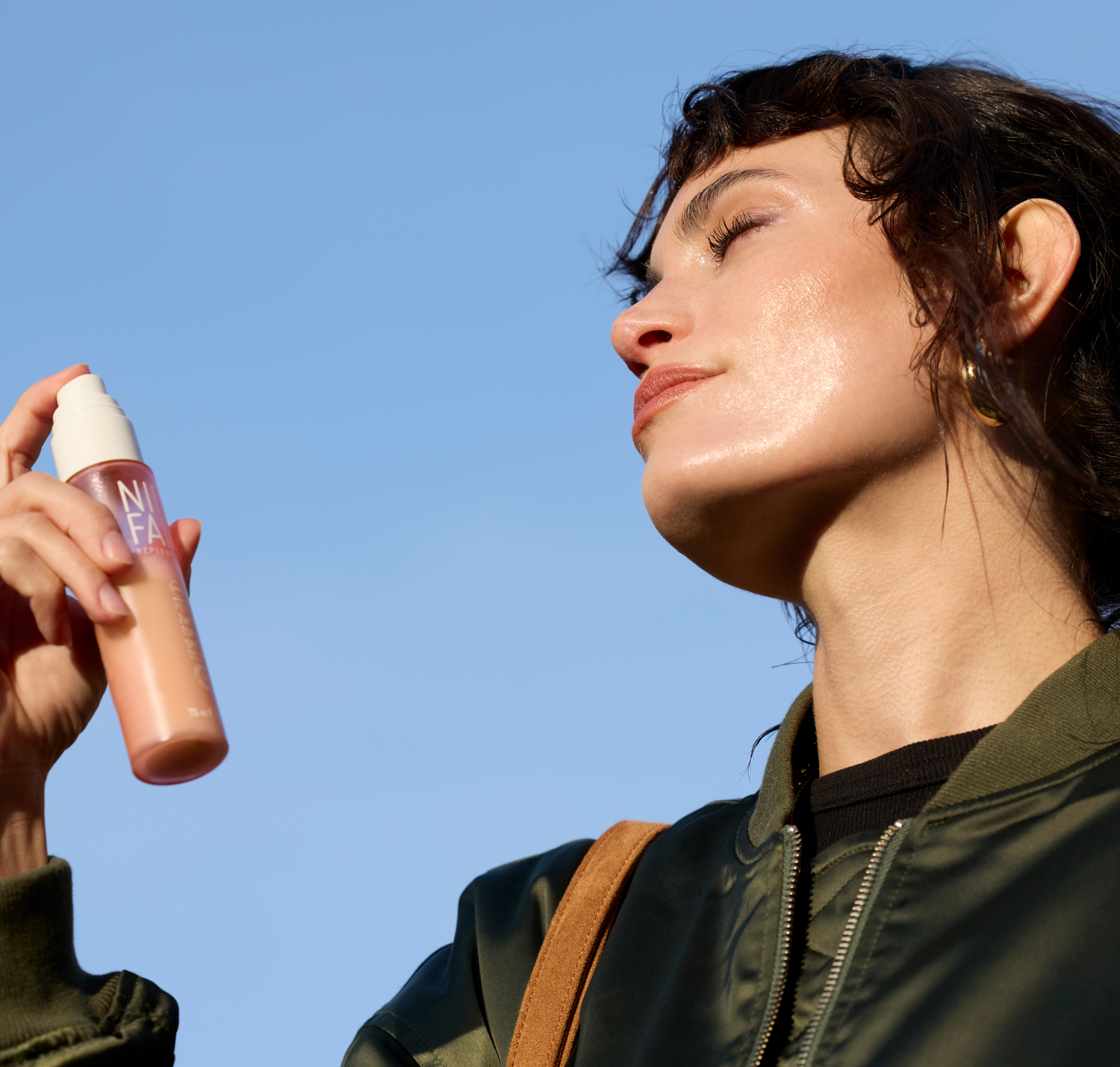


Introducing our NEW multitasking SPF 50 mist that not only helps to future-proof your skin against UV damage but also delivers a dose of hydration and plumping peptides.

Advanced daily sun defence with elevated UV filters for broad spectrum SPF 50 protection and UVA/UVB coverage

To help support collagen
levels, diminish the look of fine lines and improve skin elasticity

Powerful antioxidant which helps to nourish and protect the skin from external damage

Exposure to UV radiation is one of the key factors responsible for premature aging. Visible signs of aging include wrinkles, sagging skin, age spots and dryness, and loss of fatty cells causing the skin to lose its natural smoothness. In addition, the number of melanocytes (cells responsible for melanin production) decreases, skin can become thinner and paler, while hyperpigmentation and brown spots create an uneven tone and texture.

Most people do not apply enough SPF. Our Peptide Fix 2-in-1 SPF 50 Tone + Top up mist 4% is designed to complement your daily SPF, this ultra-fine, non-greasy, cast-free mist can be layered under and over it, leaving your skin with a plumped and hydrated glow.

Helps protect and shield the skin by minimising the damaging effects of harmful UV radiation

Without SPF, you may not get the full benefits of your skincare routine

Repeated UV exposure results in accelerated aging, loss of skin elasticity, dryness and pigmentation

1. Cleanse
2. Tone with the Peptide Fix 2-in-1 SPF 50 Tone + Top Up mist 4%
3. Eye care
4. Serum
5. SPF Moisturiser
6. Make up (optional)
7. Top up throughout the the day with the Peptide Fix 2-in-1 SPF 50 Tone + Top Up mist 4%

Photoprotection helps prevent skin aging. Sunscreen agents protect and shield the skin by minimising the damaging effects of harmful UV radiation from the sun, thereby reducing the progression of skin aging. Consistently using sunscreen daily alongside other products in your skincare routine is the most effective way to help preserve and proactively maintain long-term skin health and a youthful complexion. Even the best anti-aging routines can't replace the need for sunscreen. Without it, the benefits of these products may be compromised or less effective.
Yes. Your skin is exposed to UV radiation all year round so needs to be protected, even on cold, cloudier days.
Like skincare, make-up is breathable so will allow for some permeability of the Mist to help maintain protection. The Peptide Mist is a lightweight, invisible, non-greasy formula, perfect to spritz throughout the day. When spraying over make-up, its best to allow for the mist to air dry to avoid disturbing make-up.
As a general rule of thumb, approximately two milligrams per square centimetre of skin of sunscreen is needed to achieve the required sun protection factor (SPF) level declared on the sunscreen packaging. This equates to approximately 25-30 sprays of the Peptide Mist. This product is layerable hybrid skincare product (toner and SPF) and not a substitute for your usual sun protection or primary sunscreen (the ones designed to be used purely as a form of protection).
This product doesn’t contain wax or film forming ingredients therefore allowing other ingredients to be absorbed.
Yes. We recommend using additional SPF Moisturiser as the last step of your skincare routine and popping Peptide Mist in your bag for top-ups throughout the day or whilst on the go.
This product should not be kept in direct sunlight.
This product is not a substitute for daily sun protection and recommend you still apply a generous amount of your usual primary sunscreen.
Sunscreen should be reapplied every two hours, or more often when sweating and after swimming, exercise or towel drying.
No, the product is designed for daily use, but if you are planning to spend a day at the beach or pool, you’ll need to reapply after swimming and/or profusely sweating i.e. after sport.
This product has a period after opening of 6 months and so the product should be used within this timeframe or discarded after.
This product has not been developed to protect against blue light.
*Source: https://pmc.ncbi.nlm.nih.gov/articles/PMC6773941/